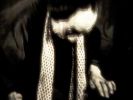Eye For Film >> Movies >> Crossways (1928) Film Review
Screening in 35mm as part of Zipangu Fest's “Reel Zipangu” and with a new live score by Minima, Crossways is another rarely seen item that the Zipangu team have brought to Western audiences. A silent film directed by Teinosuke Kinugasa in 1928, Crossways was in fact one of the first Japanese films ever seen in the West. The director, who was one of the first to gain name-recognition in the West (and is better known for his earlier film A Page of Madness), himself brought the print of the film to Europe on the Trans Siberian Express in the hope of selling it. Crossways thus became the first Japanese film to be screened widely outside of Japan when it opened in Berlin, as Im Schatten Des Yoshiwara (The Shadows Of Yoshiwara). It showed in several cities across Europe, including London in 1930, so audiences here have had to wait 82 years to see it again in a major screening.
The film itself was described by the director as a “chambara without swordfights” (Chambara being the term used to describe sword fighting genre films in Japan). In terms of the plot and visual style, Kinugasa's film shows the influence of German Expressionism and his skill with montage, and also serves as a useful reminder of how dark, explicit, cynical, and sophisticated silent cinema could be.

A story of love and revenge set around Tokyo's pleasure quarters in Yoshiwara, Crossways focuses on the hapless Rikiya and his hard -working , devoted sister Okiku. Rikiya is in love with the arrogant and dismissive geisha O-Ume. One night, Rikiya's older rival for O-Ume's affections publicly humiliates him by tearing a kimono gift he had stolen for O-Ume to shreds in front of a baying mob at the archery ground where O-Ume courts her gullible victims. After a struggle, Rikiya is blinded by ash which is flung into his eyes, and retaliates by lunging with his sword at his rival. Believing he has actually killed the man, Rikiya flees back to the lodgings he shares with his sister and awaits his fate. The plot takes an even darker turn as Okiku, struggling to aid her blinded brother, is preyed upon by the lecherous local constable, whose knowledge of Rikiya's situation gives him leverage over the girl. Okiku is caught between the devil and the deep blue sea - give in to the constable's obscene demands, or face losing her brother to the gallows.
The plot developments in Crossways are at all times supported by a powerful visual sensibility that makes for a disturbing, seedy, and hallucinatory atmosphere. For example, to emphasise Rikiya's collapsing mental state as he writhes in a mixture of agony and obsession following his injury, superimpositions and dissolves of spinning archery targets and painted geishas parading around the gaudy streets of Yoshiwara's pleasure quarters dance before our eyes (and his). The superimposed, strikingly painted face of O-Ume hovers like a gloating demon against a kaleidoscopic backdrop in his mind. Atmospheric lighting, bold shadows and meticulous set design help bring out the seedy gloom of the pleasure quarter block where Okiku and Rikiya live. The acting is also up to the task of creating this mood, be it Akiko Chihaya's repeated clutching of her collar when Okiku is threatened by the constable (suggestive of her fear of rape, which turns out to be justified) or Junosuke Bando's unnerving writhings as Rikiya's body and mind are tortured.
A gem that fans of Japanese and silent cinema should seek out, particularly if it can be seen with a live Minima score.
Reviewed on: 19 Sep 2012















